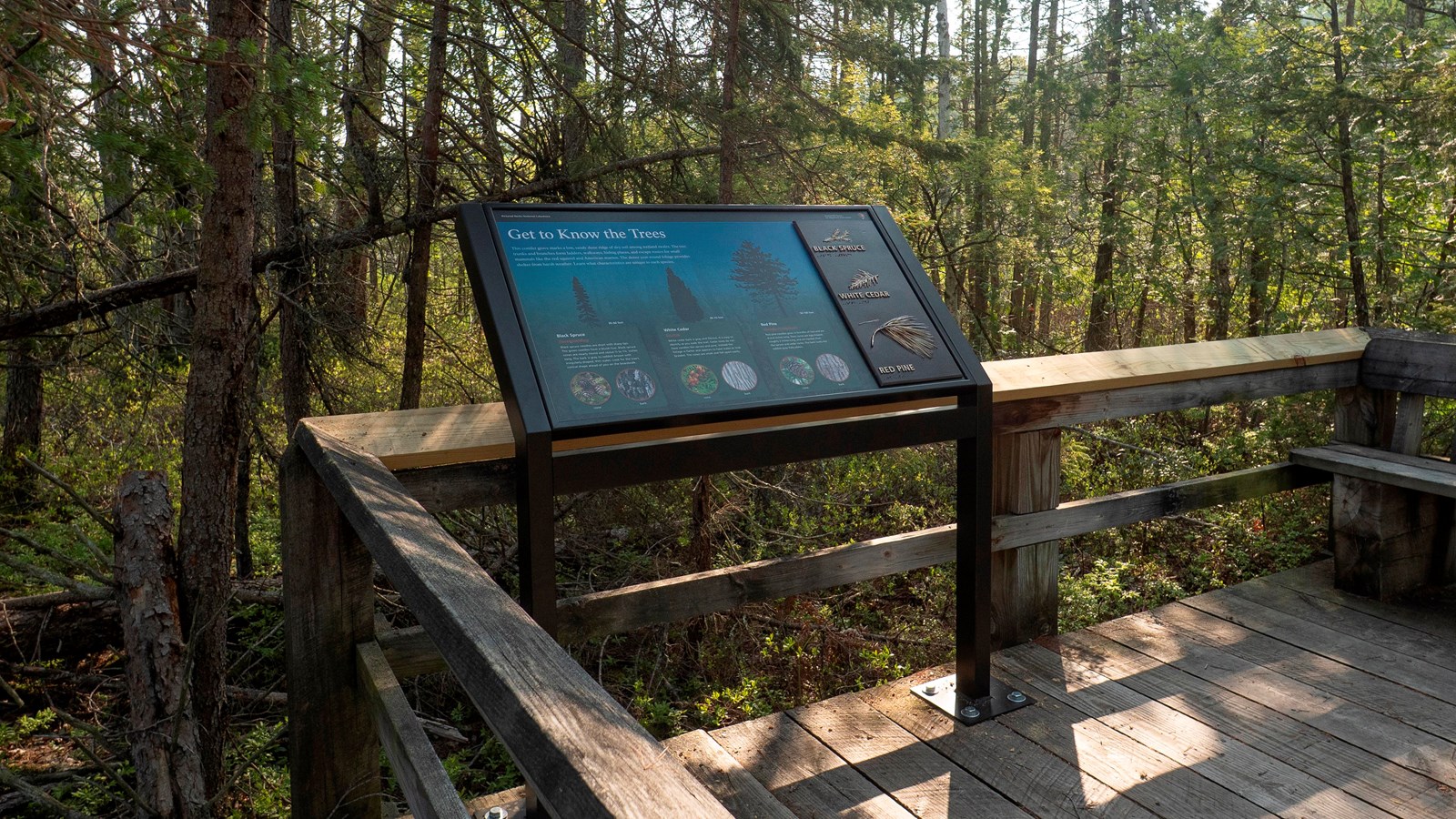Last updated: June 28, 2025
Place
Get to Know the Trees Exhibit

Get to Know the Trees
This conifer grove marks a low, sandy dune ridge of dry soil among wetland swales. The tree trunks and branches form ladders, walkways, hiding places, and escape routes for small mammals like the red squirrel and American marten. The dense year-round foliage provides shelter from harsh weather. Learn what characteristics are unique to each species.Black Spruce
The Ojibwe word for Black Spruce is “Zesegaandag.”
Black spruce needles are short with sharp tips. The green needles have a bluish hue. Black spruce cones are nearly round and about 1/2 to 1-1/4 inches long. The bark is gray to reddish brown with irregularly shaped, thin scales. Look for the tree’s conical shape ahead of you on the boardwalk.
White Cedar
The Ojibwe word for White Cedar is “Giizhik.”
White cedar bark is gray and fibrous. It is easy to identify as you walk the trail. Cedar trees do not have needles like spruce and pine, instead the foliage is flatter and appears to have scales or look braided. The cones are small and fall apart easily.
Red Pine
The Ojibwe word for Red Pine is “Wenda-zhingwaak.”
Red pine needles grow in bundles of two and are four to six inches long. Their cones are egg shaped, roughly two inches long, and are hardier than the spruce and cedar cones. The bark looks like reddish-gray flaky plates.
